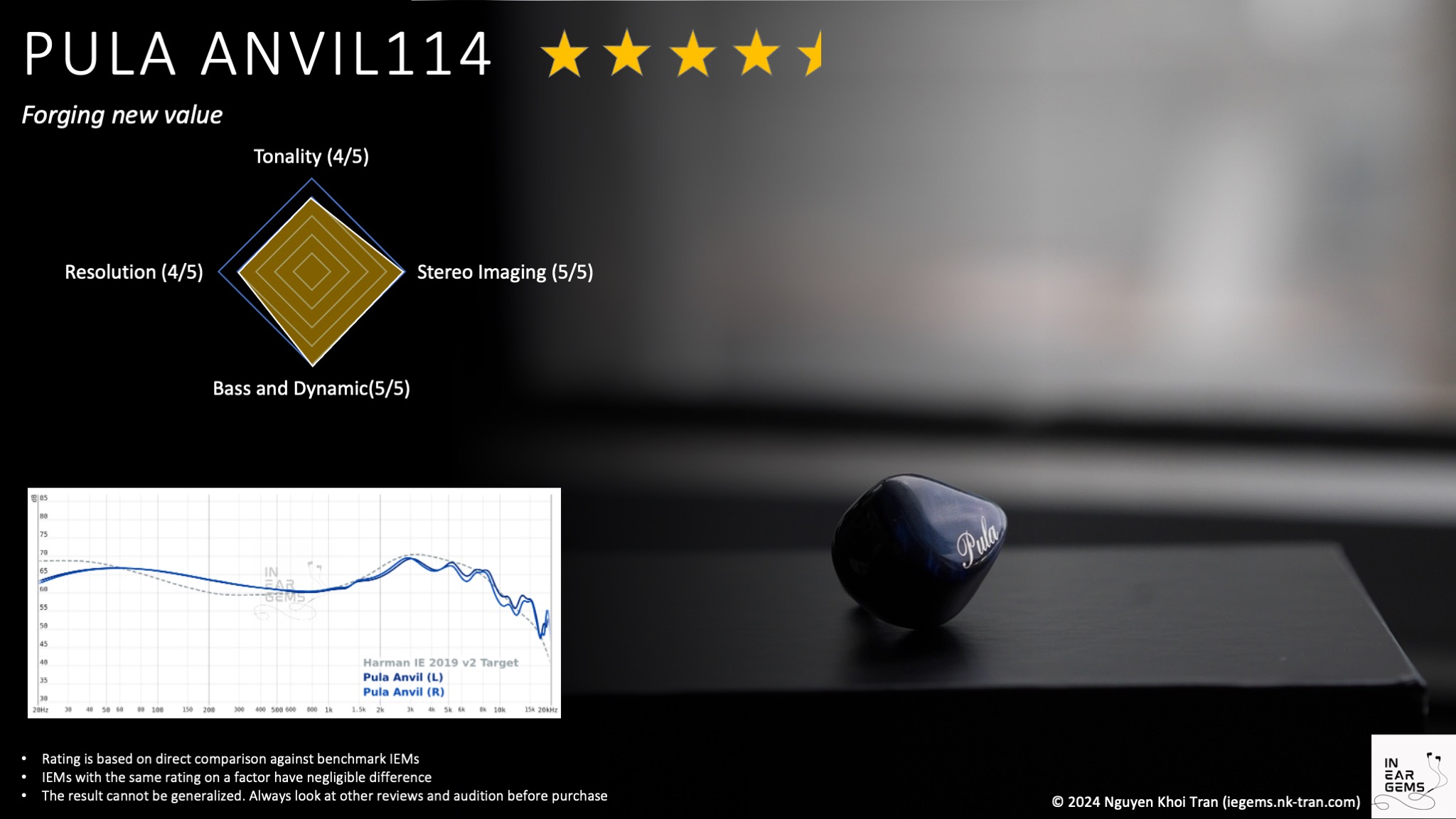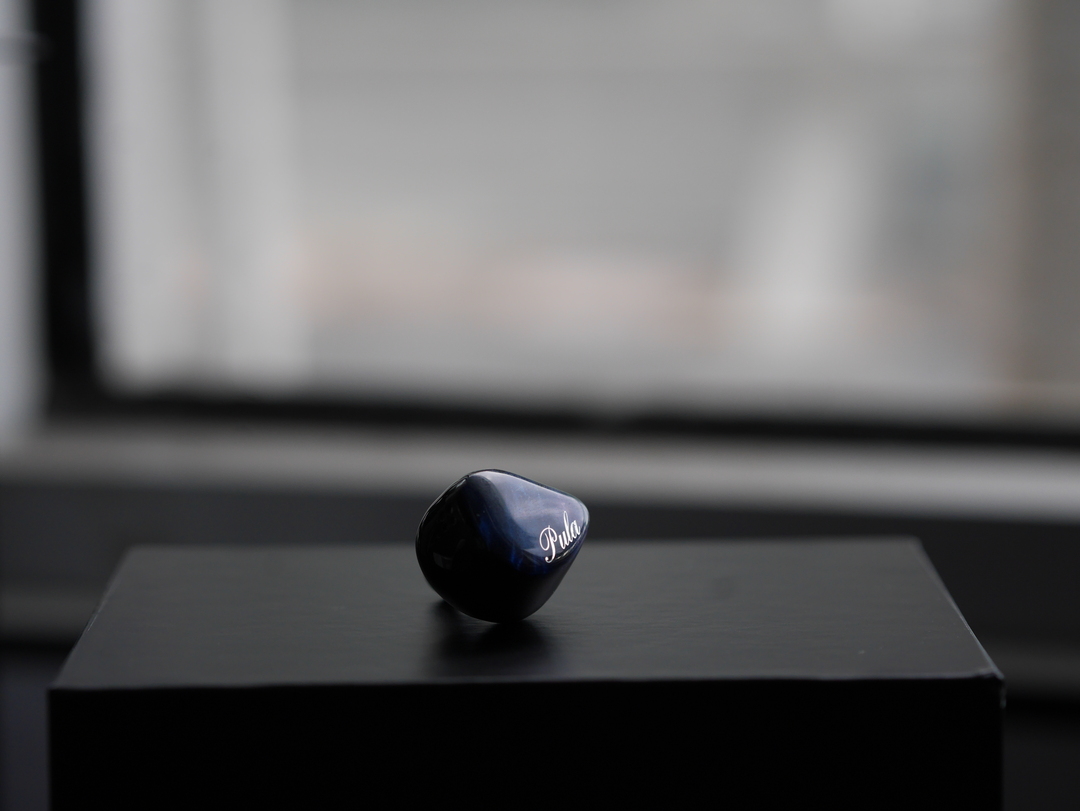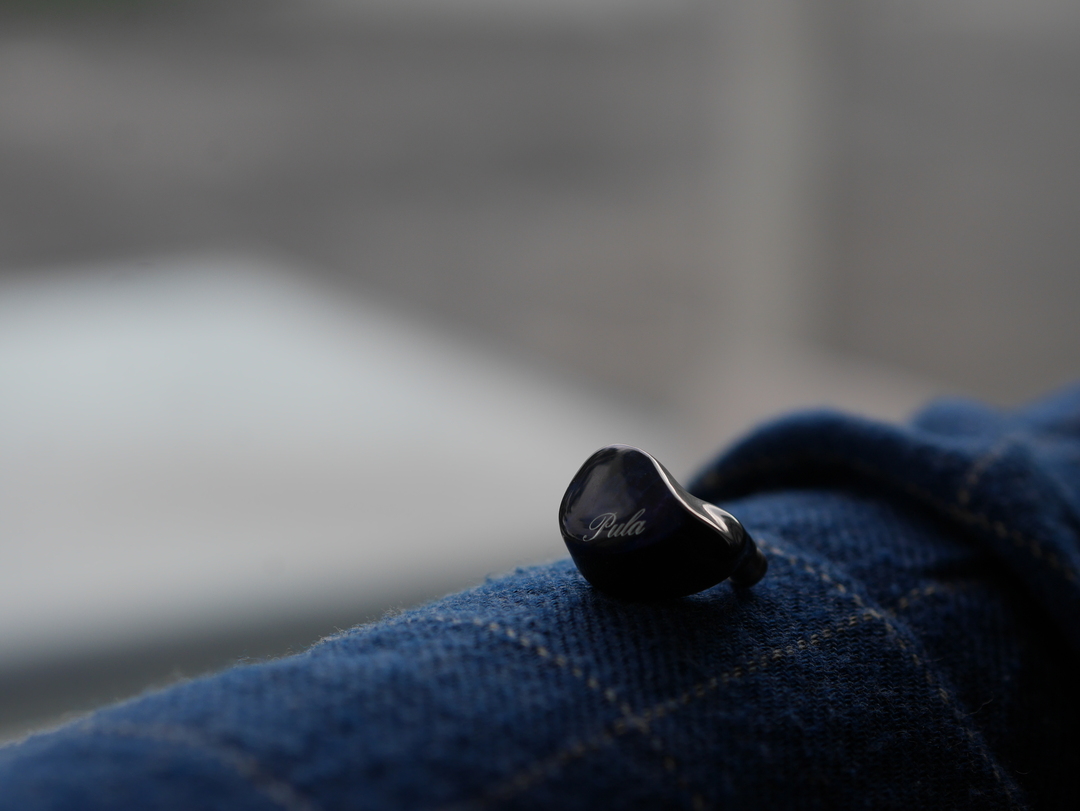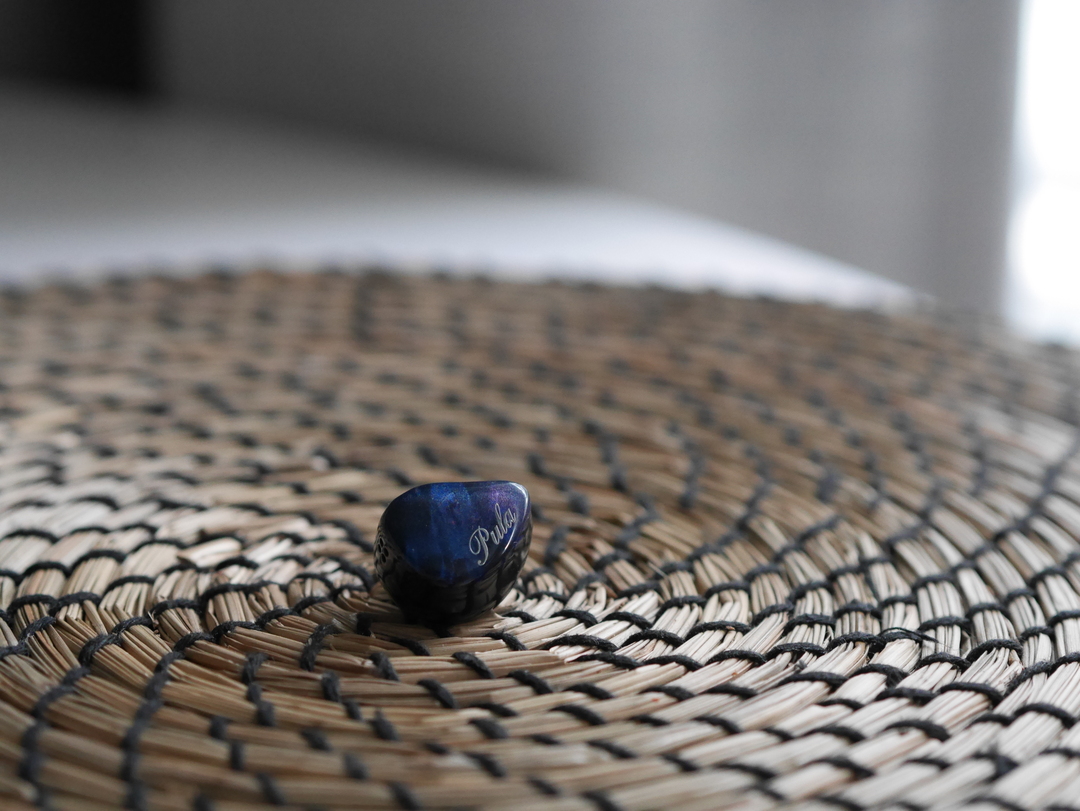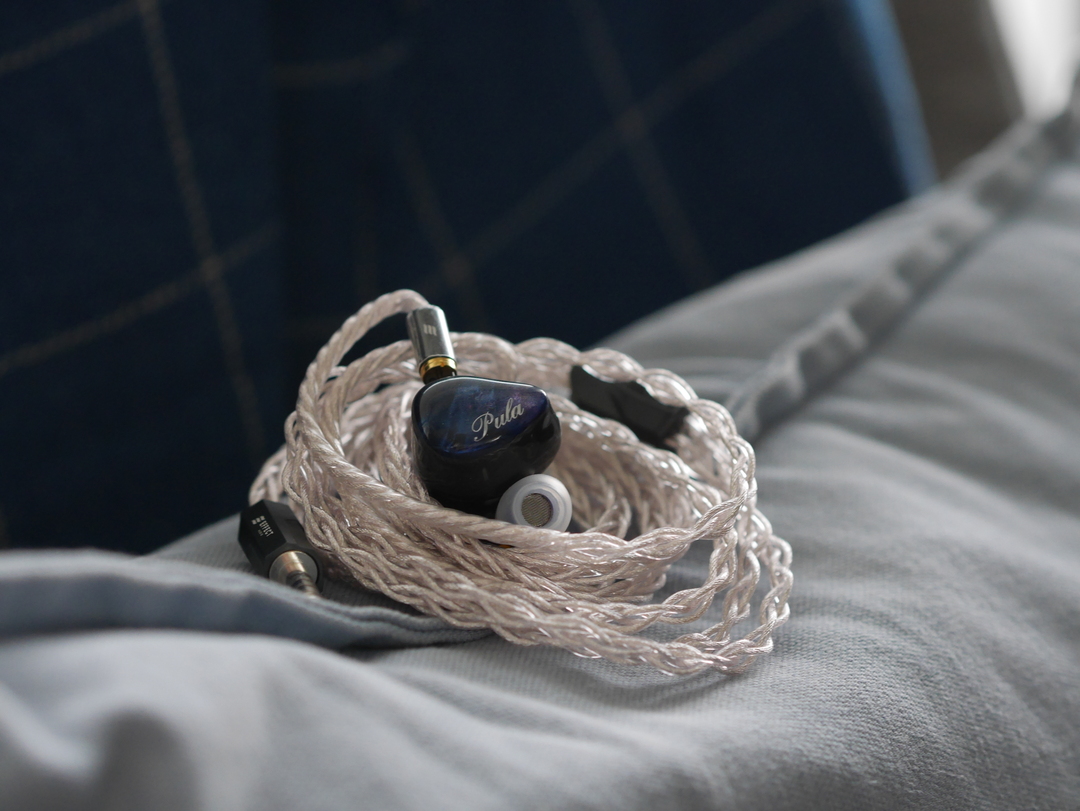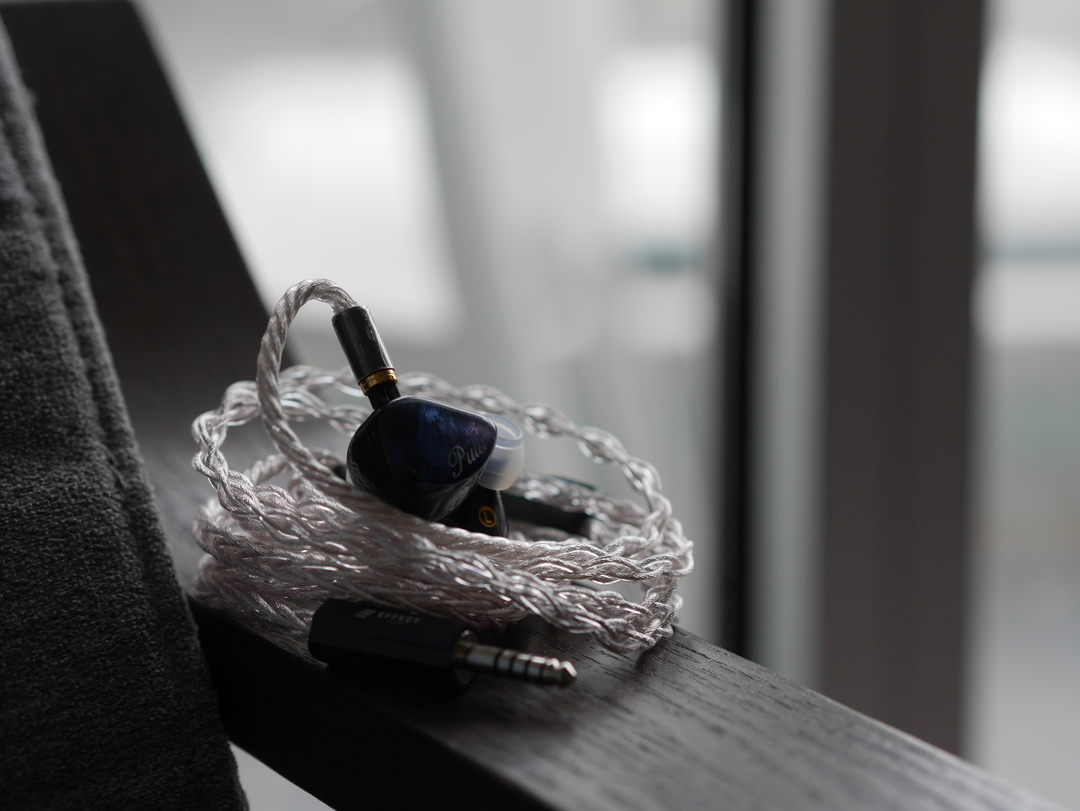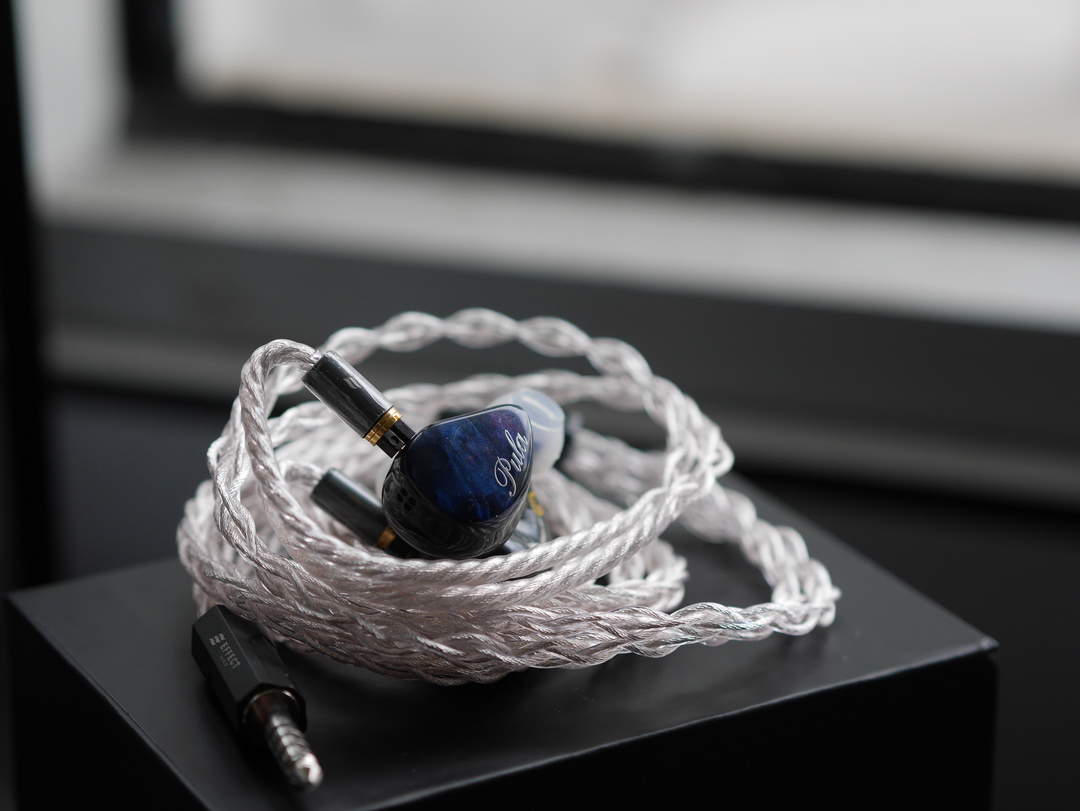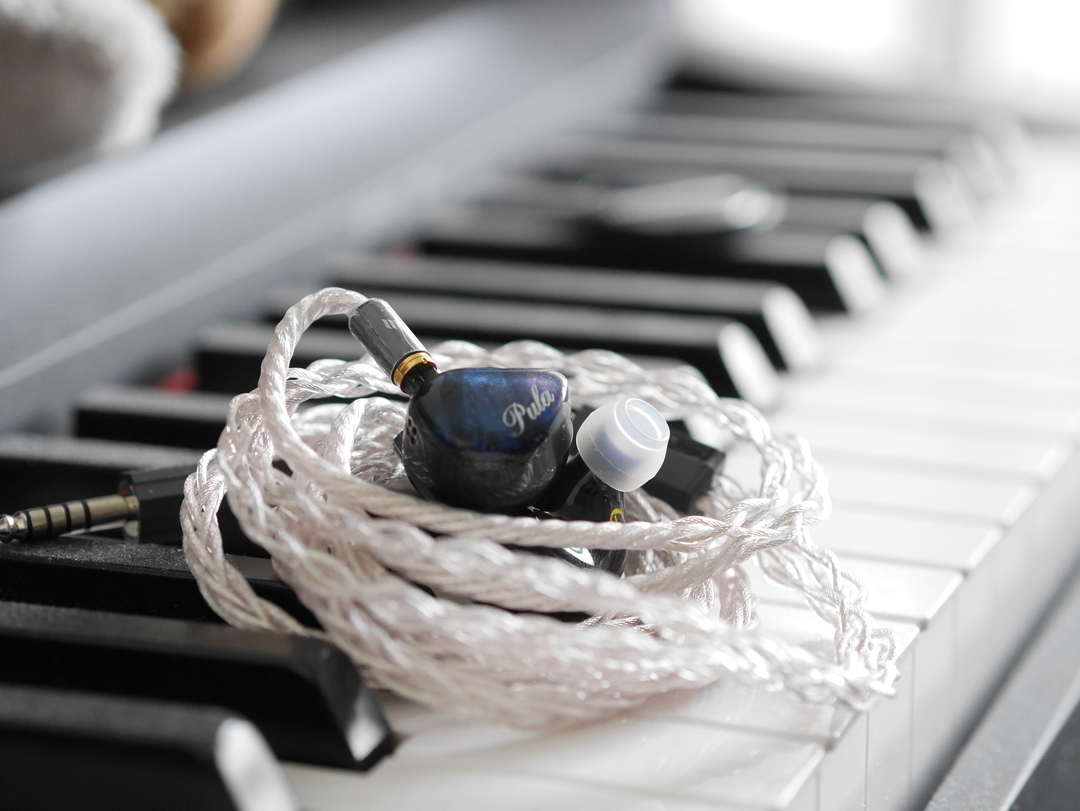PULA Anvil - Forging new value
The forth quarter of 2024 is full of surprise in the personal audio market. Today, the surprise continues with a new release from PULA, a tribrid IEM named ANVIL114.
Forewords
- What I look for in an IEM is immersion. I want to feel the orchestra around my head, track individual instruments, and hear all of their textures and details. I’m not picky about tonality, as long as it does not make the orchestra, violin, cellos, and pianos sound wrong.
- I rate IEMs within with a consistent scale from 1 (Poor) to 3 (Good) to 5 (Outstanding). An overall ranking of 3/5 or above is considered positive.
- Ranking list and measurement database are on my IEM review blog.
- The terminology for subjective impressions in this review is based on the Audio Wheel for reproduced sound defined in the technical report ITU-R BS.2399-0
- This review is based on a review sample from HiFiGo (Thank you Kerwen@Hifigo for arrangement!). I have no affiliation with or financial interest in PULA or HiFiGo.
- The unit retails for $189 at the time this review was published. Unaffiliated link: HiFiGo Web Store
General Information
PULA is another mysterious manufacturer from China whose IEMs are available via the retailer HiFiGo. That said, PULA is not without fans thanks to the success of previous releases, including the PA02 hybrid IEM. This time, PULA is back with ANVIL114, a 6-driver tribrid IEM equipped with an 11 mm Bone Conduction Driver (BCD) (For brevity, I’ll call this IEM Anvil in the rest of this article).
As the name implies, ANVIL114 has a 1+1+4 driver configuration, consisting of a 10mm dynamic driver (DD) with a bio diaphragm handling the bass frequencies, 11mm bone conduction driver (BCD) offering a full-range response, and 4 balanced armature (BA) drivers, 2 of which handle the midrange whilst the others handle the treble.
The star of the show is undoubtedly the new 11mm bone conduction driver. Unfortunately, no additional technical information is available about these drivers. Given that we know the diameter of the BCD, it’s likely that Anvil is equipped with a piezoelectric bone conduction unit, which operates similarly to the ones inside the acclaimed MEST series IEM from Unique Melody. The only indicator of the existence of the BCD inside Anvil is the unique “spring ping” sound whenever I tap the earpieces.
Non-sound Aspects

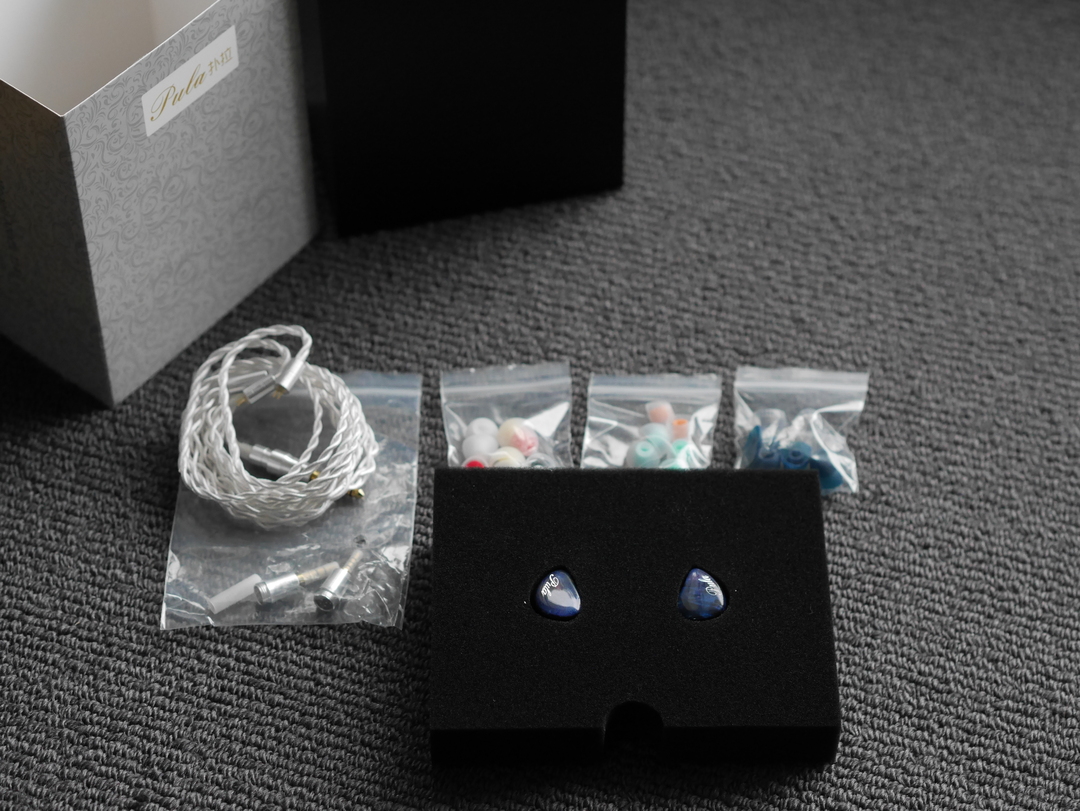


Packaging and accessories The box of Anvil is surprisingly less decorated than usual. It’s completely devoid of artworks and audio related motifs, thus reminding me of a tea box rather than an IEM box. Fortunately, it’s the content that count, and Anvil comes with quite hefty set of accessories that is unexpected given the price tag. In the box, you would find:
- The earpieces themselves
- 3 different types of eartips, including double-flanged ones
- IEM cable with interchangeable plug system. All three options (3.5mm, 2.5mm, and 4.4mm) are provided
- A roomy carrying case with felt lining. This is essentially the same carrying case that comes with some high-end IEMs like AFUL Cantor and Canpur CP54E.
Earpieces design This area is where I have quite a bit of problem with Anvil. Let’s talk about the positive aspects first: the faceplate of this IEM is absolutely beautiful. They are made up stabilized wood pieces, dyed in a purple paint, and covered with a thick layer of acrylic, polished to a glossy finish. This glossy layer is thicker than that of most IEMs landed on my review desks so far.
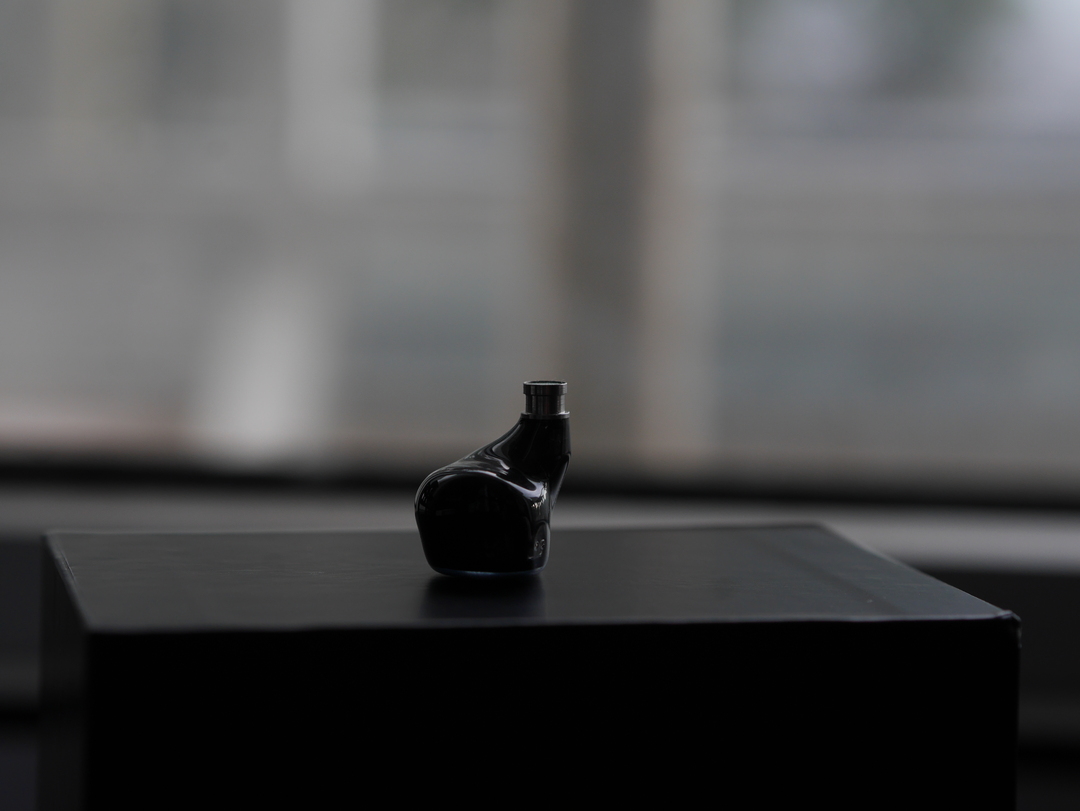
Where I have problem with Anvil is the design of the earpieces, particularly the nozzles. Simply put, Anvil has the most tricky combination of characteristics for the nozzles: thick and long. Whilst the metal tube that we call “nozzles” is not longer than average, we need to also account for the plastic part behind the metal tube, protruding from the base of the earpieces. Due to this design, the base of the earpieces do not sit flush against the concha area of my ears, which is not a good thing for BCD which relies on solid contact with the concha for optimal performance. Fitting the nozzles deeper into the ear canal is out of question for me, due to the thickness of the nozzle.
Fit, comfort and isolation I had to try quite a few types of eartips in my collection to find one that fits well and do not put too much pressure on the ears in long listening sessions. When finding the right eartips, I can achieve a stable and comfortable fit with Anvil. The noise isolation is quite good, yet I did not experience any pressure build up or driver flex problem during my tests.
In order to maximize the performance of the BCD, I gently press the back of the earpieces against the antihelix of my ears. I hear a slight but interesting change in the side channels of the soundstage when the earpieces have solid contact with the antihelix, so I guess that the BCD works as intended.
Ear tips recommendation: Quite tricky. Ideally, you need shorter and sticky eartips. However, I couldn’t get stable seal with my trusty Velvet eartips. Inthe end, I settled for Tri Clarion eartips.
Sonic Performance
Test setup:
- Sources: iBasso DX300, HiBy R3II
- Cable: stock cable with 4.4mm termination, Effect Audio CADMUS II
- Ear tips: Tri Clarion
The subjective impression is captured using the lexicon in the Sound Wheel below. I’ll clarify the terminology as I use them. If you want to see more details of the lexicon and related reference, please have a look at the technical report ITU-R BS.2399-0.
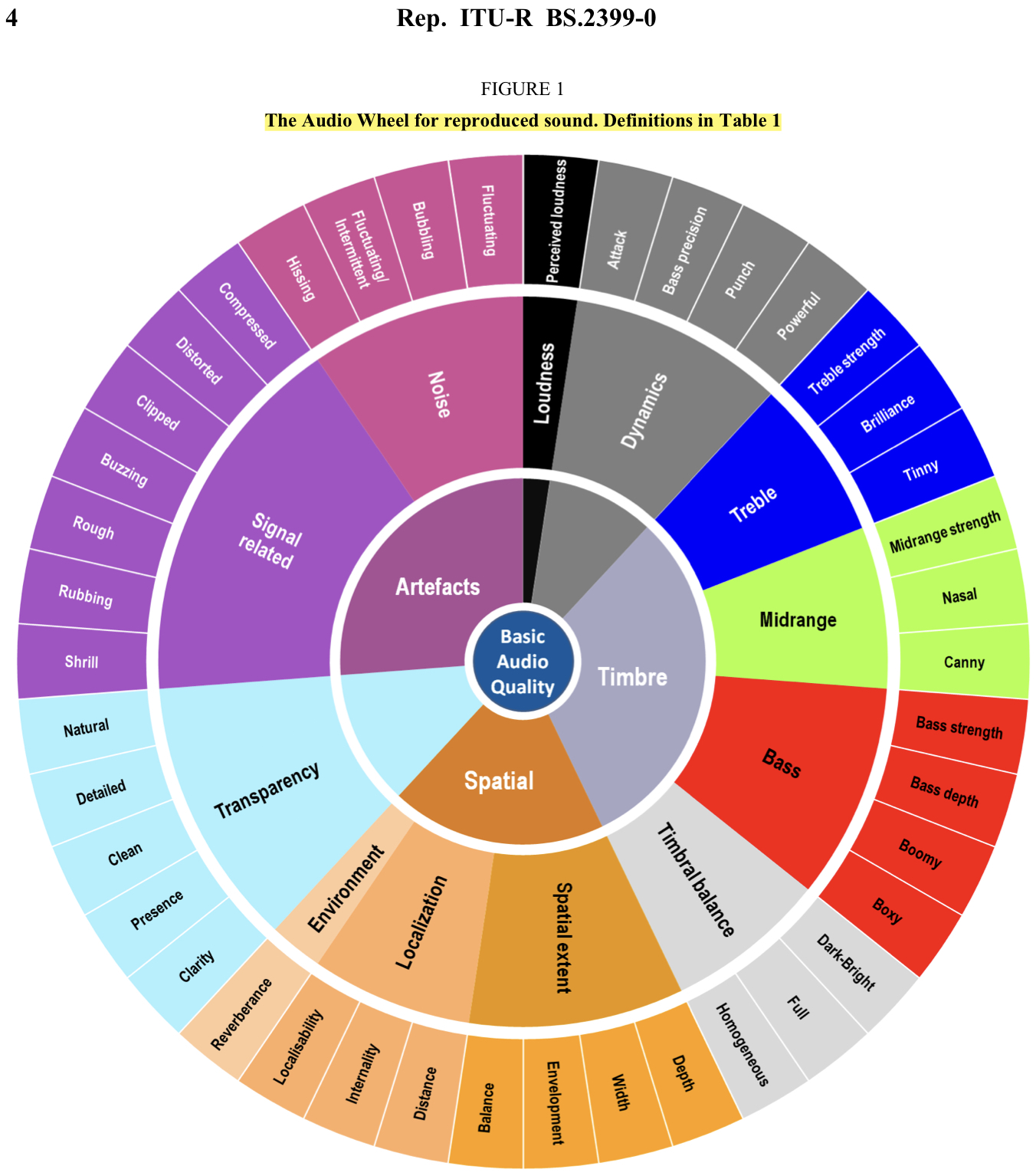
Timbre: It is helpful to think of an IEM as a filter that sits between the incoming audio signal and your ear drums. This filter makes some parts of the signal (frequencies) louder whilst other parts quieter. This effect can be measured objectively by the squiggly lines below, called Frequency Response (FR) graphs, which measure how loud an IEM is at different frequencies from 20Hz (bass) to 20kHz (upper treble). Ideally, an IEM should change the signal as least as possible (a.k.a., “flat tuning”) to avoid disturbing the balance between fundamental frequencies of instruments and their harmonics to ensure that they sound natural and life-like. Practically, IEM engineers can tune or “voice” an IEM to deviate carefully from the flat tuning to create interesting colouring and effects on the audio content. This voicing or tonal balance of an IEM can be denoted as its sound signature. Subjectivity is how your ears and brain interpret such sound signature and decide whether it is “enjoyable”
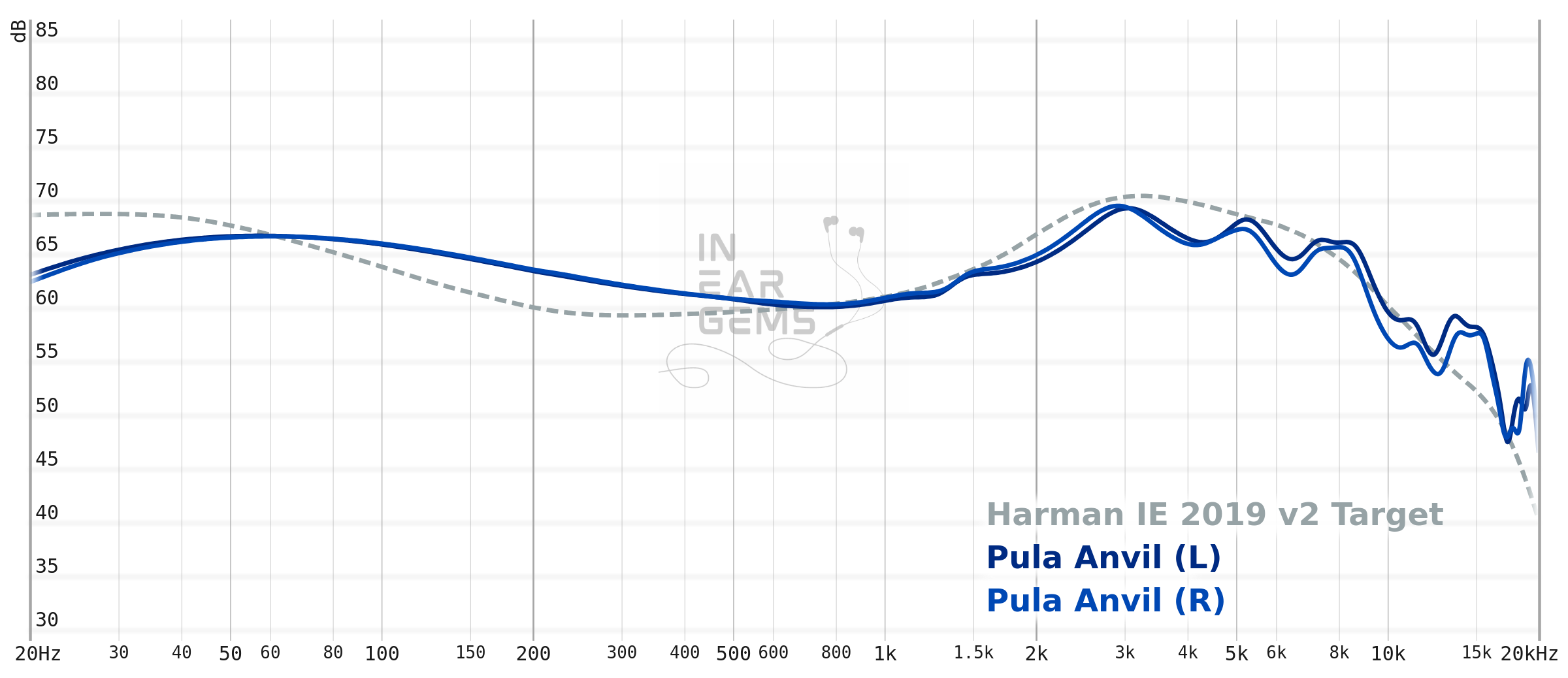
Figure shows the frequency response of Anvil against the Harman in-ear target. Measurements were done with an IEC-711-compliant coupler and might only be compared with other measurements from this same coupler. Above 8kHz, the measurement likely does not match the response at the ear drum. Visit my graph database for more comparisons.
The tonal signature of Anvil can be described as “refined V-shaped”, though as you would see, it does not really conform to the mould.
The midrange of Anvil demonstrates clear characteristics of a V-shaped tuned IEM, meaning there is stronger emphasis in both the lower and upper midrange. Practically, it means pianos and orchestra would not sound even across the range. Across my classical and acoustic library, I found that my recordings sound rather boomy and even slightly muffled in the lower midrange. I also found that female vocals are a bit more emphasised and pushed forward than my preference. In other words, there is a degree of “shoutiness” with Anvil. Fortunately, both boominess and shoutiness problems fade away quickly with repeated exposure. By the end of my testing period, it takes me only half a song get acclimated to the midrange tonality of Anvil and become unbothered.
Looking beyond the peculiars of V-shaped midrange, I would say Anvil still does a good job with the midrange. Ed Sheeran sounds rich and emotive without becoming too piercing or harsh, even with harsher recordings in the “=” album. John Denver sounds sweet and breezy. “Weeb” music such as Kiwi wa Boku ni Niteiru by See-Saw sounds clear, clean, and emotive without unbearable shoutiness or harshness. Rock bands such as Polyphia also sound great across the board. The only tracks where Anvil does only an okay job are cellos, pianos, and chamber musics.
The treble and bass region are where Anvil deviates from the V-shaped signature and earns itself the “refined” moniker. We will talk about bass in the next section. Here, let’s discuss treble. After peaking at the upper midrange, Anvil quickly rolls off the lower-treble, particularly the presence region around 4-6kHz to keep treble harshness under control. This tuning choice if particularly beneficial for Anvil to counter its upper-midrange boost and the difficulty to fitting Anvil deeply into the ear canal to smoothen the treble. The upper parts of treble of Anvil is also quite uneventful. Practically, it means you would find cymbals, hats, chimes, and higher brass instruments to be more quiet than usual with Anvil. On the plus side, the details and nuances of these instruments are reproduced very well and because they are less loud, it would be easier for you to hear those instruments. The more restrained treble response also ensure that Anvil handle sibilant recordings well, especially with tracks mixed with hotter 5-6kHz region.
Percussion, Bass, and perceived dynamic: In this section, my focus is the not just the bass, but rather the sense of dynamic of an IEM. Can it convey the sense of beat and rhythm? Can it reproduce transients, the fast and large jump of loudness in the music? Simply put, is this IEM toe-tapping? Creating this energy requires all parts of the frequency spectrum working together: treble energy around 4-6kHz conveys snappy attacks of stick hitting percussive instruments at the beginning of a beat, bass energy around 150Hz conveys the punchy sensation of the beat itself, whilst the subbass energy below 60Hz creates the physical rumble sensation that convey power and atmosphere. Weak treble response dulls the attacks. Weak bass makes beats hollow. Too much bass makes bassline blurry and dulls the sense of rhythm. Thus, “dynamic IEM” is a balancing art.
Percussion and dynamic are where Anvil flexes. But first, let’s talk about the rather strange bass of Anvil. Simply put, Anvil has less bass quantity that other recent releases with V-shaped or U-shaped tuning, yet it can convey a great sense of impact with each beat in the music. Practically, having less bass quantity means when I listen to tracks with strong low-pitched rumble, such as the opening theme of Skyrim, I found the rumble to be rather faint and de-emphasised. Moreover, the perception of bass impacts tend to happen at the “phantom centre” in the middle of my head or at the ear drums rather than being pushed down to the throat or even the chest like what I hear with sub-bass focused IEM.
The more restrained bass quantity of Anvil has an advantage: it makes the bassline of Anvil sounds dry, crisp, and “fast”. This dryer presentation is also aided by rather great quality of the bass. It means textures and details of the bass guitars, double basses, lower notes of cellos are well preserved and presented.
Where Anvil shines the brightest is how it presents drums and beats. The best way to visualise the presentation of Anvil is imaging the sound of a hammer striking a piece of red hot steel on an anvil. Anvil does a great job of scaling from a pitch-black background to the full drum hit and then come back to zero in an incisive and impactful way. As a result, Anvil sounds tactile and physical, despite not having a large amount of bass. This presentation is particularly suited for faster kick drums in Polyphia’s albums. At the same time, Anvil also conveys the energy of “epic” soundtracks from video games with finesse. Agile, tactile, and impactful. It’s a toe-tapping IEM.
Resolution: To me, “resolution” can be broken down into three components: (1) Sharpness, incisiveness, or “definition” of note attacks (see the figure below). (2) The separation of instruments and vocals, especially when they overlap on the soundstage. (3) The texture and details in the decay side of the notes. The first two give music clarity and make it easy to track individual elements of a mix. The last provides music details and nuances. Whilst IEMs can “force” clarity by boosting treble to unnatural level, it might still lack resolution as it cannot “peel apart” complex tracks with overlapping instruments

Anvil is a quite resolving IEM in the grand scheme and outright impressive if we consider its price tag. The incisiveness of its presentation, combined with the retrained bass quantity ensures that the midrange feels clean and present. The rather great treble quality that I described previous help Anvil conveys a great sense of details and nuances in the music. Whilst Anvil is not entirely “effortless” when handling complex recordings such as ABC feat. Sophia Black by Polyphia (meaning it takes some deliberate effort from my side to identify and track individual elements in the mix), it does a better job than the venerable Moondrop Blessing 2 in A/B tests, despite having thicker lower midrange. The overall sense of separation detail retrieval in this track is identical to, if not better than my Andromeda 2020, the “gatekeeper” of “great resolution” in my system.
Recordings with congested lower frequencies such as Now We Are Free performed by 2CELLOS does trip Anvil up as the presentation feels a bit too boomy and lacking definition for me. This result is somewhat inevitable due to the tuning choice of Anvil. On the plus side, sparse recordings such as Ciaccona from Bach’s Violin Partita No. 2 in D Minor, performed by Kavakos sound great with Anvil. I like the clean, dry tone of violin and the clear reproduction of reverberation.
Stereo imaging and soundstage: Stereo imaging or “soundstage” is a psychoacoustic illusion that different recording elements appear at various locations inside and around your head. Your brain creates based on the cues in the recording, which are enhanced or diminushed by your IEMs, your DAC, and your amplifier. In rare cases, with some specific songs, some IEMs can trick you into thinking that the sound comes from the environment (a.k.a., “holographic”)

Let’s face it: the expected “magic sauce” in the soundstage and stereo imaging is the main reason why you look for an IEM with BCD. Thus, the make-or-break of Anvil would be the soundstage illusion that it can convey. Despite some hiccups at the beginning, Anvil ultimately delivers on the soundstage front.
Before we talk about “soundstage of BCD”, let’s get two disclaimers out of the way. Firstly, no, this IEM does not sound like a pair of stereo speakers or Dolby Atmos spatial audio. It would not magically transport you to a concert hall. It does not push the singer outside the phantom centre in your head to place them in front of you. Secondly, the effectiveness of BCD relies heavily on the fit. Simply put, you need to have as much contact between the shells and your ears as possible. An additional point is that it is rather impossible to say with any certainty whether the soundstage effect I describe here is actually caused by the BCD, since there is no way to turn off the BCD and compare. So, it’s possible that it’s simply the case that the shell design and the tuning of Anvil gives it a nice soundstage.
With the disclaimers out of the way, let’s talk about Anvil’s soundstage. Spacious and uncanny would be two keywords that I use. Recordings feel expansive, as if there is no “wall” at the outer bound of the stage that limits the sound from travelling outward. This effect is the most prominent with spacious recordings such as Shadow of Baar Dau, which can trigger the illusion that the music expands outward to fill in the environment around me. Left-to-right extension of the soundstage is quite strong, as Anvil regularly triggers the illusion that the side channels of the mix come from outside the ears. The illusion of depth and layering is also strong, thanks to the clear contrast between the center of the soundstage and the background elements such as the string or choral section, generally placed further away at front-left and front-right of the stage. There are also instances when the sound elements seem to be placed behind my ears or towards the back of my head. The height illusion is not as prominent, but competent enough to complete an “orbital soundstage” illusion with the right recording.
Positioning of instruments in complex, 3D-sounding recordings like Original Sound Effect Track - Memory from Gundam Seed Destiny OST album or trippy recordings from Yosi Horikawa is also pretty good, though not laser sharp. In other words, Anvil can take advantage of the large soundscape that sometimes expand beyond the head to create an interesting, immersive IEM soundstage that is not commonly heard. It’s those moments when the sound pans to the sides or the “detach” of background elements from the foreground elements of the mix that makes the soundstage of Anvil more special than that of other highly competent IEMs.
Driveability
Anvil is quite sensible when it comes to sensitivity, clocking at 16.5ohm and 105dB/mW (likely at 1kHz, as the spec sheet did not elaborate on this detail). It is not too sensitive that it hisses with every DAC/amp, yet it is sensitive enough to avoid pushing portable DAC/amp to distortion. To put in context, Anvil requires almost the same volume level as the AFUL Performer5+2, much higher volume level than Andromeda 2020, and less volume level than AFUL Cantor with both my DX300 and HiBy R3II. I found that Anvil sounds competent enough with R3II and thus can recommend this pairing for a (relatively) affordable daily-driver setup. However, I do notice quite more incisive instrument separation and even more spreadout soundstage when pairing Anvil with my DX300 + Topping G5 (used as a pure amplifier). Therefore, I would say there is room for “scaling” Anvil, though such scaling is not necessary nor making “day-and-night” differences.
Comparisons

Vs AFUL Performer5+2:
- Performer5+2 is much more comfortable and easy to fit for me, thanks to the smaller shell and thinner nozzles.
- Performer5+2 sounds more even across the midrange, whilst Anvil sounds more boomy in the lower frequencies and more forward in the upper midrange. On the other hand, Anvil is more tamed in the 4-6kHz region. In short, Performer5+2 is less shouty but can be more edgy in the treble, whilst Anvil is can be more shouty but less edgy.
- Subjectively, Performer5+2 has an organic and “musical” tone in the midrange that works especially well with slower vocals and acoustic music, whilst Anvil does not give me that.
- Performer5+2’s bass has more bloom and organic decay whilst Anvil is dryer and crisper. Both IEMs render drum kits very well but in different ways.
- Both IEMs have the same degree of precision and control in terms of instrument placement in the soundstage, but the soundstage of Anvil expands further than that of Performer5+2.
- At a glance, Anvil feels more incisive and more “resolving” thanks to the more lively and dry presentation. However, when facing busy tracks, especially the ones with congested lower midrange, Performer5+2 pulls ahead in terms of how easy it is to track individual elements in the mix. These results persisted even when I pair Anvil with DX300+G5 and P5+2 with R3II.
Conclusions
As the year closes, I would like to direct your attention to the accelerated progress of “ChiFi” IEM world. Around this time last year, if you tell me something like Anvil would exist with the $200 retail price tag, I would say “keep dreaming.” It’s not dreaming anymore. It’s here, and it delivers.
So, should you add Anvil to your collection? There are but two questions you need to ask yourself. Firstly, do you have any problem with large and protruding IEM nozzles? It’s not only about comfort, but also about getting the most out of Anvil. Secondly, how much do you value an even midrange. Would you be listening to a lot of piano and string quartets with this IEM? If your question is “no” for both, Anvil is worth consideration.
What I like about this IEM:
- Impressive, uncanny soundstage and imaging
- Tactile, agile, and impactful percussion reproduction
- Good resolution
- Generally good tonality
- Well-controlled sibilant
What could be improved:
- The nozzles should be thinner and less protruding from the shells
- Flatter midrange could improve the reproduction of piano and cello recordings
Absolute Sonic Quality Rating: 4.5/5 - Outstanding
- Timbre and tonality: 4/5
- Bass and dynamic: 5/5
- Resolution: 4/5
- Soundstage and imaging: 5/5
Bias Score: 4/5 - I like this IEM
